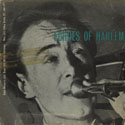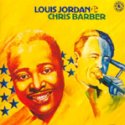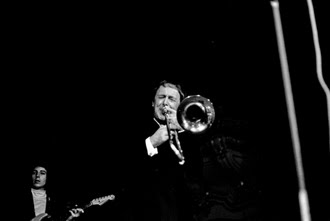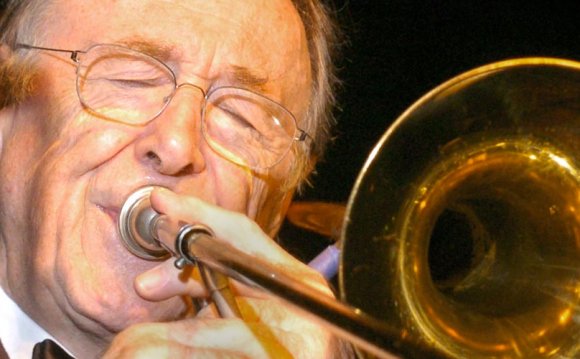
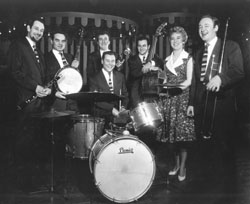
Very wonderful reasons for jazz, apart from the actual noise from it, is its record. In place of the bought succession of composers' everyday lives that forms the good, stiff, upright back of educational music, you find a wild jumble of personal history, big business, individual eccentricity, economics, flawed memory, downright lies, and a romantic streak large adequate for Ethel M. Dell having danced a jig on! a deeper look will expose an organized principle underlying all this confusion, for like an amoeba, which multiplies by splitting into two components, and every component into two again, jazz bands have been dividing and multiplying since before friend Bolden shaven their last buyer! A band is formed. It does really or not, whilst the situation might be. Ultimately somebody chooses to leave, or is thrown out. Regardless, the result is the same - a band begins to develop around him plus the whole process begins over again. The result of this technique is the fact that jazz teams in general are seldom around long enough to get a corporate lifetime of their own. In some sort of where even 2 yrs is quite a while for aggregation of performers to stay collectively, the exceptions are generally conspicuous. In the us, one straight away thinks about Duke Ellington then of Count Basie; in Britain, of Chris Barber. TAKE OFF
Dedication to New Orleans jazz sadly does not preclude awkward differences of temperament. After fourteen months of ever-increasing clashes, the complete musical organization handed in two weeks' notice to Ken, choosing Chris as his or her frontrunner, and remembering Pat Halcox on trumpet, chances are ensured of earning a living playing jazz. This was perhaps not initial Barber band, for Chris had led his very first group as an amateur from 1949 to 1953, however it ended up being the 1954 team which included exactly the right components to hold it to popularity. During the time, a great deal had been made of a supposed musical difference between the 2 factions; suffice it to say that 2 yrs later on, the repertoires of Barber band and Ken's brand new band had been very nearly identical many of their files nearly indistinguishable. PROPULSION
In the event that you hear the files made by the band in 1954 and 1955 (and it's also significant that almost all of all of them are now actually - in 2007 - available on music cds) you will see straight away that, inspite of the modifications many years have actually brought, there clearly was an amazingly powerful similarity amongst the noise of that band while the present (1965) one. Among several reasons for this, the main could be the curious musical commitment which is out there between Barber and Pat Halcox. For Pat is not any driving, right lead player into the ordinary sense of your message. His method is fragile however mercurial, more oblique and lyrical versus traditional lead. This necessitates that Chris, inside the turn, plays a slightly "straighter", more positive trombone part than that always of a small grouping of this instrumentation. This causes a division of labour between two devices which varies extensively from what is traditionally accepted. The subtle harmonic and tonal opportunities thus recognized form the greatest single take into account the band's straight away identifiable sound.
The rhythm part is a case in point. Starting with the instrumentation of this very first New Orleans groups, with banjo, bass and drums, and no piano, the musical organization developed a "modus operandi" which, paradoxically, attracts regarding experience of modern-day jazz teams. The section tends to pivot all over bass, rather than the banjo or bass-drum, and also the fact that Chris himself has also studied bass could have some bearing about this.
Dick Smith is promoting a style of bass playing founded upon the rhythmic impact of fun new Orleans syncopating bass people, but incorporating the harmonic and melodic approach regarding the move and modern eras. Graham Burbidge's contribution has been to attract upon the techniques of "independence" found because of the modern-day jazz college, which may have allowed him to provide increased melodic and rhythmic curiosity about contrast using early in the day design. The banjo, in Barber's view, is an instrument worthy of even more respect than its blackface minstrel beginnings generally speaking lend to it. Within the Barber musical organization it plays a job which differs based on the kind of rhythm fundamental each tune. In many cases its essentially employed playing two-beat electric guitar rhythm, à los angeles Hot Club of France Quintet; in others, it fulfils the role associated with the "comping" pianist while the bass and drums carry the rhythm.
The performing of Ottilie Patterson has-been a good propulsive take into account the musical organization's overall performance and development since she joined up with in 1955, in addition to band's design of overall performance has actually often been impacted by its experience of vocal accompaniment. One really informing element which any jazz team's style depends may be the self-control of users while improvising together, and this is sensed many obviously whenever accompanying a solo artiste. The musical organization's success within way is not any less as a result of Ottilie's deeply felt and well-phrased performing than to their very own talent. Ottilie herself, with goals similar to Chris's, has retained the best components of old-style blues singing and combined them with aspects of present-day blues to produce a person blues design. TREND SETTING It was the Barber musical organization's good deal to pioneer things, perhaps not consciously like mountaineers or gold-prospectors, but through a kind of inborn style for making brand new sounds and effects which later on distribute throughout British jazz. Maybe not least was the opportunity adoption of a piano-less rhythm area, as well as the ensuing development of the much maligned Uk "trad" sound - and all sorts of since there was not a pianist around at the time! Two various other areas of the band's initial performance were to go out of their particular scars not only regarding the Uk jazz scene additionally from the wider scene of activity.
In 1955 the planet became alert to skiffle, through the performing of Lonnie Donegan. Your message, skiffle, had been originally applied to home-made (but none the less musical) vocal and instrumental jazz, performed at "rent parties" in the belated '20s in the United States. Lonnie included an element of country-style singing to the conception, and when he recorded Leadbelly's " Rock Island Line" in 1954 with Chris on bass and singer Beryl Bryden on washboard, the record was a sudden success, earning gold files in both the U.S.A. and Britain. The honours of first trend-setting success of the Barber band fell to Monty Sunshine. In 1956 he recorded a solo overall performance of Bechet's "Petite Fleur" which, whenever introduced as a single in 1959, received the band two more gold files. "Petite Fleur" ended up being undoubtedly plainly the progenitor of popularity of numerous semi-pop clarinet functions, notably "Summer Set" and "Stranger on coast" by Acker Bilk. Exactly what claims is another trend set by the Barber musical organization is the present curiosity about rhythm and blues. Normally adequate, through Ottilie's interest in this idiom, the musical organization was led to deal with, as long ago as early 1959, songs outside the strictly old-fashioned area in still another way, also to phone upon the solutions of Alexis Korner on electric guitar and Cyril Davies on harmonica in 1961. In 1962 Korner and Davies formed their very own R&B group, that has since - amoeba-like - separate into other teams. The introduction of an R&B style by the standard jazz musical organization of Chris Barber was, unquestionably, provided greater impetus by their organization with numerous great American musicians.
|
|||||||||||||||||||||||||||||||||
INTERESTING VIDEO

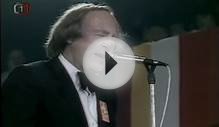
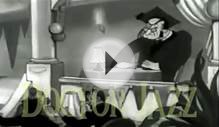

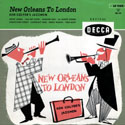
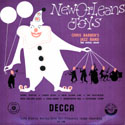 While continuing to be a convinced traditionalist Chris thinks that there's area for development within old-fashioned jazz and has been successful in keeping the axioms of standard design, while attaining a sound clearly familiar as one of today and not of yesterday.
While continuing to be a convinced traditionalist Chris thinks that there's area for development within old-fashioned jazz and has been successful in keeping the axioms of standard design, while attaining a sound clearly familiar as one of today and not of yesterday.
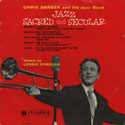 It could be the role regarding the clarinet when you look at the band with undergone the least differ from the New Orleans conception. Additionally it is obvious that the clarinet, in recent years, may be the one jazz instrument whose development seems to have ended, also among modernists. After the deviation of Monty Sunshine in December 1960, Ian Wheeler joined from Ken Colyer musical organization, and brought with him a fluent and accomplished clarinet design very close to the initial New Orleans conception; less conventionally, he brought along an alto saxophone. The musical organization had been frequently joined in shows by alto-sax players since the Ken Colyer days of 1953, when Joe Harriott very first sat in with great success. Later, the musical organization was joined by Joe Harriott, Bertie King, and Louis Jordan on record. Ian's firm, pressing alto has given the chance to develop, in appropriate numbers, a far more solid ensemble sound and contains greatly enhanced a number of the more-arranged pieces showcased by the band.
It could be the role regarding the clarinet when you look at the band with undergone the least differ from the New Orleans conception. Additionally it is obvious that the clarinet, in recent years, may be the one jazz instrument whose development seems to have ended, also among modernists. After the deviation of Monty Sunshine in December 1960, Ian Wheeler joined from Ken Colyer musical organization, and brought with him a fluent and accomplished clarinet design very close to the initial New Orleans conception; less conventionally, he brought along an alto saxophone. The musical organization had been frequently joined in shows by alto-sax players since the Ken Colyer days of 1953, when Joe Harriott very first sat in with great success. Later, the musical organization was joined by Joe Harriott, Bertie King, and Louis Jordan on record. Ian's firm, pressing alto has given the chance to develop, in appropriate numbers, a far more solid ensemble sound and contains greatly enhanced a number of the more-arranged pieces showcased by the band.
